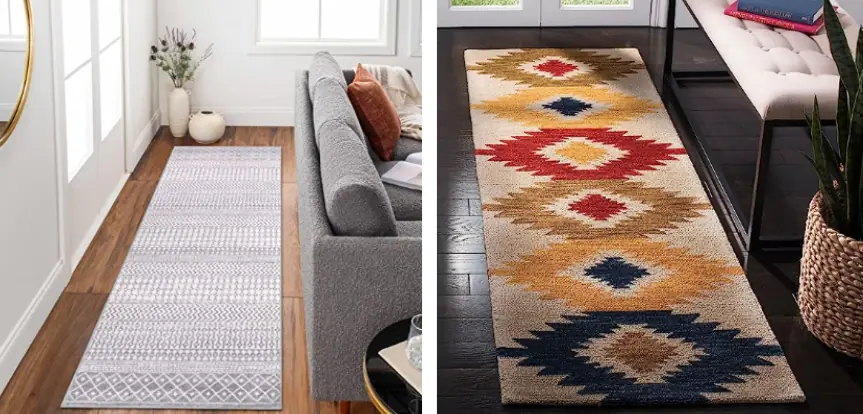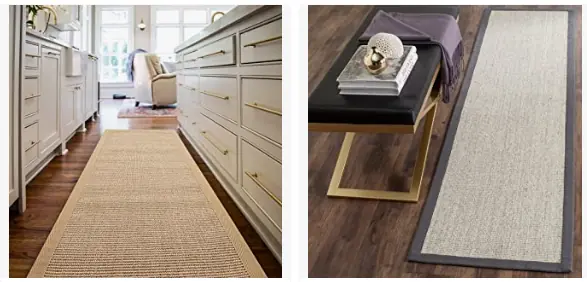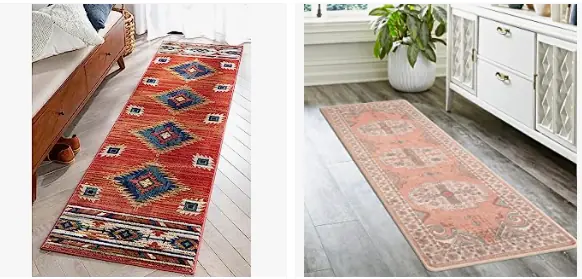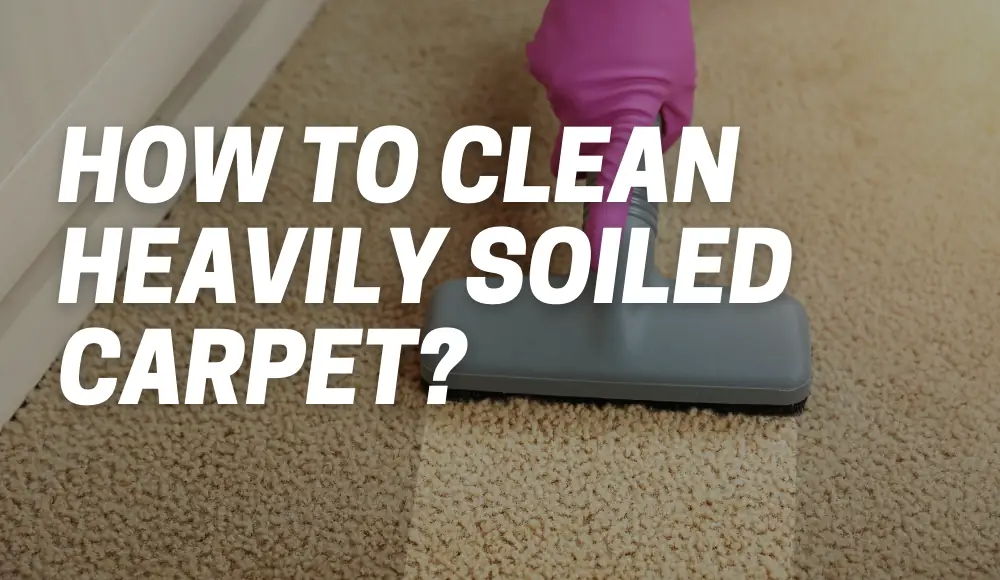Carpet runners are a popular choice for adding both style and functionality to your home. These long, narrow rugs not only enhance the aesthetics of your space but also protect high-traffic areas from wear and tear. If you’re considering investing in a carpet runner, you may wonder what is the best material for carpet runners for your specific needs.
In this article, we’ll explore the various materials available for carpet runners and help you make an informed decision.
Are Carpet Runners Worth It?
Before we delve into the best materials for carpet runners, let’s address the question of whether they are worth the investment.
The answer depends on your individual circumstances and preferences.
Carpet runners can be a valuable addition to your home, particularly in areas where foot traffic is heavy. They can protect your flooring, reduce noise, and provide a warm, welcoming feel.
Additionally, they can add a touch of style and elegance to hallways, staircases, or entryways.
If you have hardwood or tile floors, carpet runners can offer comfort underfoot and prevent slips and falls. They also provide insulation, making your home feel cozier during colder seasons.

Ultimately, the decision to invest in a carpet runner depends on your personal needs and the specific areas of your home you wish to enhance.
How Do I Choose a Runner Carpet?
When choosing a runner carpet, there are several factors to consider.
Let’s take a look at some key considerations:
- Size: Measure the length and width of the area where you plan to place the carpet runner. Ensure it fits well without being too short or too long.
- Style: Select a runner carpet that complements the overall aesthetics of your home. Consider the color, pattern, and texture that would best suit your existing decor.
- Durability: Since carpet runners are often placed in high-traffic areas, durability is crucial. Look for materials that can withstand heavy footfall and are resistant to stains and fading.
- Maintenance: Consider the cleaning and maintenance requirements of the material. Some materials may require professional cleaning, while others can be cleaned at home.
- Budget: Set a budget for your carpet runner and explore options within that range. Remember that higher-quality materials may come at a higher price, but they often offer better longevity and durability.
By considering these factors, you can narrow down your options and choose a runner carpet that meets your needs and preferences.
What is the Best Material for a Runner Carpet?
Now, let’s explore the best materials for carpet runners:
1. Wool
Wool is a popular choice for carpet runners due to its natural durability and luxurious feel. It offers excellent resilience, meaning it can bounce back from heavy foot traffic without showing signs of wear and tear. Wool is also naturally flame-resistant and has great insulating properties, keeping your home warm and reducing energy costs.
However, wool carpet runners may require professional cleaning and can be pricier compared to other materials.
Wool Moroccan carpet runner
2. Synthetic Fibers
Synthetic fibers, such as nylon and polyester, are widely used in carpet manufacturing. They offer a range of benefits, including affordability, stain resistance, and easy maintenance.
Nylon, in particular, is known for its exceptional durability and resilience, making it an excellent choice for high-traffic areas. Polyester, on the other hand, provides a soft and luxurious feel. Both materials come in various colors and patterns, allowing for versatility in design.
3. Natural Fibers
Natural fiber carpet runners, such as sisal and jute, are environmentally friendly options that can add a touch of organic charm to your home.
Sisal is a durable material that offers a rustic aesthetic and is resistant to stains.
Jute, on the other hand, provides a softer texture and is often used in areas where comfort is prioritized.
Sisal carpet runner
Keep in mind that natural fiber carpets may be more susceptible to moisture and require careful maintenance.
4. Blends
Blended carpet runners combine different fibers to achieve a balance of qualities. For example, a wool and synthetic blend can offer the durability of synthetic fibers with the natural feel and luxuriousness of wool.
Blends allow you to leverage the advantages of multiple materials and create a carpet runner that suits your specific requirements.
Can You Put a Carpet Runner in the Kitchen?
While it is possible to use a carpet runner in the kitchen, there are a few factors to consider before making a decision.
The kitchen is an area prone to spills, stains, and high foot traffic, which can pose challenges for maintaining and cleaning a carpet runner.
If you choose to use a carpet runner in the kitchen, here are some tips to keep in mind:
- Material Selection: Opt for a carpet runner made from stain-resistant and easy-to-clean materials. Synthetic fibers like nylon or polyester are popular choices for kitchen runners due to their durability and resistance to stains. These materials can be easily wiped clean in case of spills or accidents.
- Maintenance: Regular maintenance is crucial to keep your kitchen carpet runner in good condition. Vacuum the runner frequently to remove crumbs, dirt, and debris. Additionally, follow the manufacturer’s instructions for cleaning and spot-treating any stains that may occur.
- Size and Placement: Choose a carpet runner that fits the dimensions of your kitchen and provides adequate coverage in high-traffic areas. Ensure it is not too long or wide, as it may pose a tripping hazard. Consider placing the runner strategically in areas where you spend the most time standing, such as in front of the sink or stove.
- Slip Resistance: To prevent the carpet runner from slipping or sliding on the kitchen floor, use a non-slip pad or rug grippers underneath. These accessories provide traction and help keep the runner securely in place, reducing the risk of accidents.
- Hygiene Considerations: Keep in mind that kitchen environments can be prone to food spills, odors, and potential bacterial growth. Regularly clean and sanitize your kitchen runner to maintain a hygienic environment.
It’s important to note that some individuals prefer to use hard flooring materials like tiles or hardwood in their kitchens for easier maintenance and cleaning.
However, if you desire the warmth and aesthetic appeal of a carpet runner, selecting a suitable material and practicing proper maintenance can make it a viable option for your kitchen.
What Material Should a Kitchen Runner Be?
When choosing a runner carpet for your kitchen, it’s important to consider the unique demands of this area.
Kitchens are prone to spills, stains, and high levels of foot traffic. Therefore, a kitchen runner should prioritize durability, stain resistance, and ease of cleaning.
Synthetic fibers such as nylon or polyester are excellent choices for kitchen runners. These materials are highly resistant to stains, and spills can be easily wiped clean.
Additionally, synthetic fibers offer good durability, ensuring your kitchen runner can withstand heavy foot traffic and the occasional dropped utensils.
Synthetic Kilim runner for kitchen
Do You Put a Pad Under a Carpet Runner?
Using a pad or underlay under your carpet runner is highly recommended. Pads provide several benefits, including:
- Slip Resistance: Pads help prevent the carpet runner from slipping or sliding, providing a safer surface to walk on.
- Cushioning: Pads add an extra layer of cushioning, enhancing comfort underfoot and reducing fatigue.
- Protection: Pads protect the flooring underneath the carpet runner from scratches, dents, and abrasions.
When selecting a pad, opt for a non-slip version designed for use with carpet runners. Ensure it is the appropriate size and thickness for your specific needs.
How Big Should a Carpet Runner Be?
What is the average carpet runner size?
Determining the ideal size for your carpet runner depends on the space where you plan to place it. Consider the following guidelines:
- Length: Measure the length of the area you want to cover with the carpet runner. Leave a few inches of space exposed at each end for a balanced look.
- Width: Carpet runners typically come in various widths, usually ranging from 2 to 3 feet. Choose a width that suits the dimensions of your space and complements the surrounding furniture.
Remember to take accurate measurements before purchasing your carpet runner to ensure it fits perfectly within the intended area.
FAQs
How do I stop my carpet runner from moving?
To prevent your carpet runner from moving, you can use non-slip pads or rug grippers underneath. These accessories provide traction and help keep the runner securely in place.
What is the most durable carpet for a stair runner?
When it comes to stair runners, durability is essential. Wool and synthetic fibers, particularly nylon, are popular choices for stair runners due to their resilience and ability to withstand heavy foot traffic.
In conclusion, choosing the best material for your carpet runner requires careful consideration of factors like durability, style, maintenance, and budget.
By understanding the unique qualities of different materials, you can select a runner carpet that not only enhances the aesthetics of your home but also stands the test of time. Whether you opt for the natural elegance of wool or the practicality of synthetic fibers, a well-chosen carpet runner can add comfort and charm to your living space.







